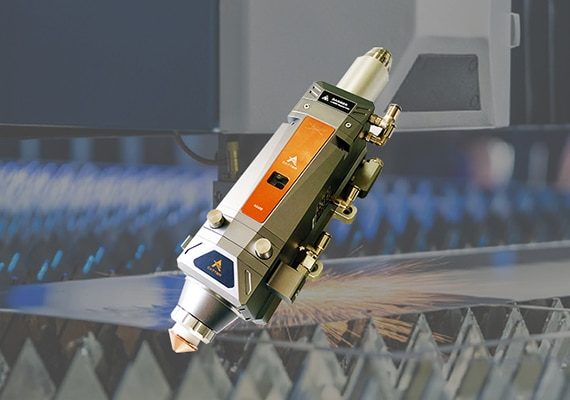
The high-quality laser cutting head delivers precision and efficiency, featuring advanced optics for superior beam focus and accuracy. Designed for durability and versatility, it ensures clean cuts on various materials, minimizing waste. With user-friendly adjustments and high-speed performance, it’s the perfect component for professional-grade laser cutting applications.
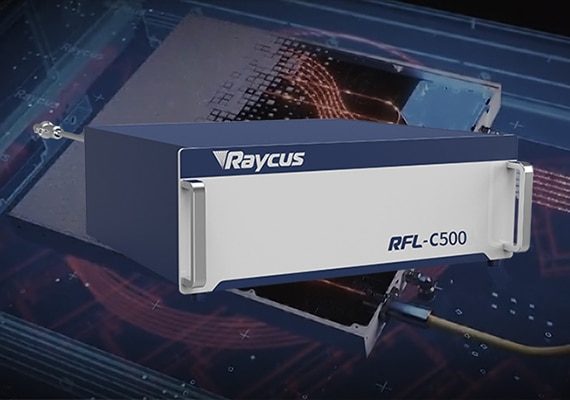
The ultra-stable laser generator is the heart of cutting-edge performance, delivering consistent power output for flawless cutting and engraving. Engineered for reliability, it ensures precision even during extended operations. Its advanced design minimizes fluctuations, enhances efficiency, and maximizes material compatibility, making it essential for professional-grade laser cutting applications.
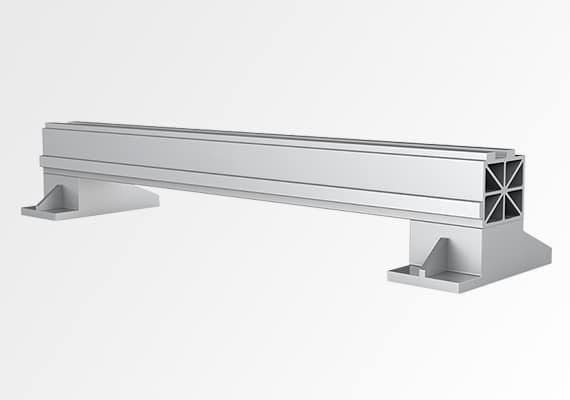
The aviation aluminum beam combines lightweight design with exceptional strength, ensuring stability and precision during high-speed operations. Crafted from aerospace-grade aluminum, it enhances cutting accuracy while resisting deformation. Its corrosion-resistant and durable structure reduces vibration, enabling smooth, efficient performance, making it a cornerstone of advanced laser cutting technology.
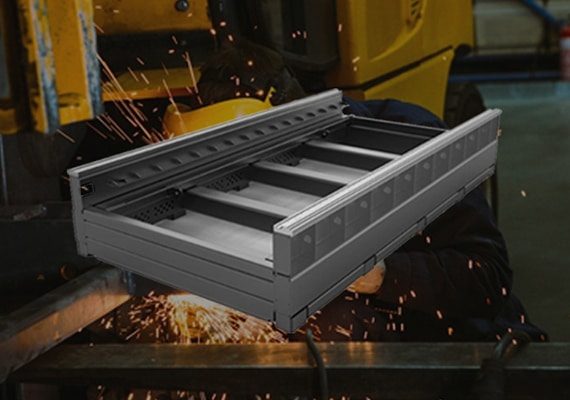
The Sturdy Cutting Bed is built for durability and precision, providing a stable platform for flawless laser cutting. Its robust construction resists wear and deformation, ensuring long-term reliability. Designed to support heavy workloads and various materials, it enhances cutting accuracy and efficiency, making it indispensable for industrial-grade performance.
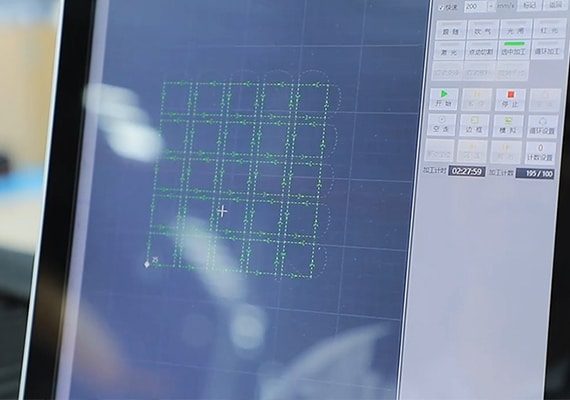
The friendly CNC control system offers intuitive operation with a user-focused interface, simplifying laser cutting processes. Equipped with advanced programming capabilities, it ensures precise control and seamless execution of complex designs. Compatible with various file formats, it boosts productivity while providing an effortless experience for professionals and beginners alike.
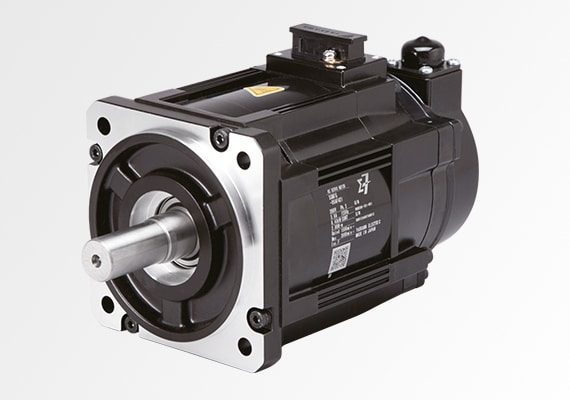
The high-precision servo motor ensures unmatched accuracy and smooth motion control for laser cutting operations. Its advanced design delivers rapid response and stable performance, enabling intricate cuts with exceptional detail. Built for durability and efficiency, it minimizes errors and enhances speed, making it essential for professional-grade cutting precision.
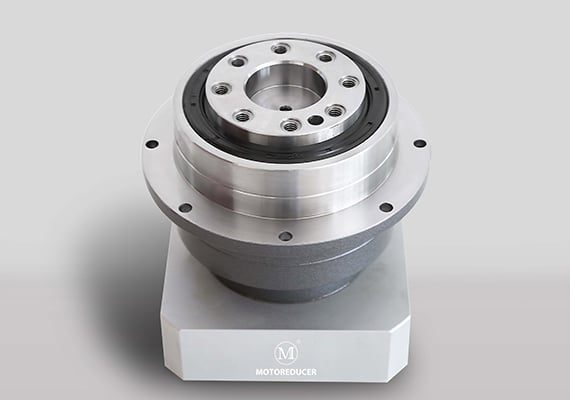
The high-performance reducer optimizes torque transmission for smooth and efficient laser-cutting operations. Engineered for durability, it minimizes vibration and ensures stable performance under high workloads. Its precision design enhances cutting accuracy and extends machine life, making it an indispensable component for achieving consistent, high-quality results.
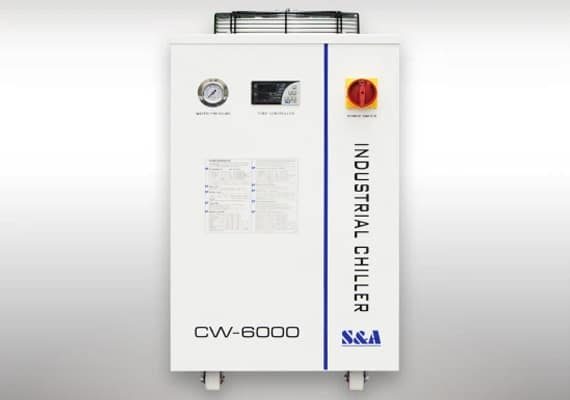
The high-efficiency water chillers provide reliable cooling to maintain optimal laser performance during intensive operations. Designed for energy efficiency, they regulate temperature precisely, preventing overheating and ensuring consistent output. With a durable build and user-friendly controls, these chillers enhance system longevity and productivity, making them essential for peak laser-cutting efficiency.
| Model | AKJ-1325F | AKJ-1530F | AKJ-1545F | AKJ-2040F | AKJ-2560F |
|---|---|---|---|---|---|
| Cutting Range | 1300*2500mm | 1500*3000mm | 1500*4500mm | 2000*4000mm | 2500*6000mm |
| Laser Type | Fiber Laser | ||||
| Laser Power | 1-40KW | ||||
| Laser Generator | Raycus, Max, IPG | ||||
| Control Software | Cypcut, Au3tech | ||||
| Laser Head | Raytools, Au3tech, Boci | ||||
| Servo Motor | Yaskawa, Delta | ||||
| Guide Rail | HIWIN | ||||
| Maximum Moving Speed | 100m/min | ||||
| Maximum Acceleration | 1.0G | ||||
| Positioning Accuracy | ±0.01mm | ||||
| Repeat Positioning Accuracy | ±0.02mm | ||||
Achieves exceptional accuracy with advanced laser technology, delivering clean, intricate cuts on a variety of materials.
Combines powerful laser generators and optimized components to ensure fast, reliable performance for large-scale operations.
Features a sturdy cutting bed, aviation aluminum beam, and robust components designed for long-lasting, industrial-grade use.
Equipped with a friendly CNC control system, simplifying complex processes with intuitive controls and seamless integration.
Capable of cutting a wide range of materials, including metals, plastics, and composites, for diverse applications.
High-efficiency water chillers maintain optimal system performance while minimizing energy consumption.
High-precision servo motors and high-performance reducers ensure smooth, stable motion for flawless results.
Maximizes productivity with minimal material waste and maintenance costs, providing excellent value for businesses of all sizes.
| Laser Power | Thickness (mm) | Cutting Speed (m/min) | Focus Position (mm) | Cutting Height (mm) | Gas | Nozzle (mm) | Pressure (bar) |
|---|---|---|---|---|---|---|---|
| 1000W | 1 | 9 | 0 | 0.5 | N2 | 2.0S | 12 |
| 2 | 2 | -1 | 0.5 | N2 | 2.0S | 14 | |
| 3 | 0.8 | -1.5 | 0.5 | N2 | 3.0S | 16 | |
| 1500W | 1 | 15 | 0 | 0.5 | N2 | 1.5S | 12 |
| 2 | 5 | -1 | 0.5 | N2 | 2.0S | 14 | |
| 3 | 1.8 | -1.5 | 0.5 | N2 | 2.5S | 14 | |
| 2000W | 1 | 18 | 0 | 0.8 | N2 | 1.5S | 12 |
| 2 | 8 | -1 | 0.5 | N2 | 2.0S | 12 | |
| 3 | 3 | -1.5 | 0.5 | N2 | 2.5S | 14 | |
| 4 | 1.3 | -2 | 0.5 | N2 | 3.0S | 16 | |
| 5 | 0.8 | -2.5 | 0.5 | N2 | 3.0S | 16 | |
| 3000W | 1 | 20-28 | 0 | 0.8 | N2 | 1.5S | 12 |
| 2 | 10-15 | 0 | 0.5 | N2 | 2.0S | 12 | |
| 3 | 5.0-6.0 | -1 | 0.5 | N2 | 2.5S | 14 | |
| 4 | 2.5-3.0 | -2 | 0.5 | N2 | 3.0S | 14 | |
| 5 | 1.8-2.2 | -2.5 | 0.5 | N2 | 3.0S | 14 | |
| 6 | 0.8-1.0 | -3 | 0.5 | N2 | 3.0S | 16 | |
| 4000W | 1 | 25-28 | 0 | 0.6 | N2 | 1.5S | 12 |
| 2 | 12-15 | -1 | 0.6 | N2 | 1.5S | 12 | |
| 3 | 7.0-8.0 | -1 | 0.6 | N2 | 2.0S | 14 | |
| 4 | 4.0-5.0 | -2 | 0.5 | N2 | 2.5S | 14 | |
| 5 | 2.5-3.0 | -2 | 0.5 | N2 | 3.0S | 14 | |
| 6 | 2.0-2.5 | -2.5 | 0.5 | N2 | 3.0S | 16 | |
| 8 | 0.8-1.0 | -4 | 0.5 | N2 | 3.0S | 16 | |
| 6000W | 1 | 30-40 | 0 | 1 | N2 | 1.5S | 12 |
| 2 | 18-20 | -1 | 0.5 | N2 | 2.0S | 12 | |
| 3 | 12-14 | -1 | 0.5 | N2 | 2.5S | 14 | |
| 4 | 8.0-9.0 | -1.5 | 0.5 | N2 | 3.0S | 14 | |
| 5 | 5.0-5.5 | -2 | 0.5 | N2 | 3.0S | 14 | |
| 6 | 3.2-3.8 | -2.5 | 0.5 | N2 | 3.0S | 16 | |
| 8 | 1.5-1.8 | -3 | 0.5 | N2 | 3.5S | 16 | |
| 10 | 0.8-1.0 | -3 | 0.5 | N2 | 3.5S | 16 | |
| 12 | 0.6-0.7 | -4 | 0.3 | N2 | 4.0S | 18 | |
| 8000W | 1 | 30-40 | 0 | 1 | N2 | 2.0S | 12 |
| 2 | 25-27 | -1 | 0.5 | N2 | 2.0S | 12 | |
| 3 | 15-18 | -1 | 0.5 | N2 | 2.0S | 12 | |
| 4 | 10-11 | -2 | 0.5 | N2 | 2.0S | 12 | |
| 5 | 7.0-8.0 | -3 | 0.5 | N2 | 2.5S | 14 | |
| 6 | 6.0-6.5 | -3 | 0.5 | N2 | 2.5S | 14 | |
| 8 | 2.5-3.0 | -4 | 0.5 | N2 | 2.5S | 14 | |
| 10 | 1.0-1.5 | -5 | 0.5 | N2 | 5.0B | 14 | |
| 12 | 0.8-1.0 | -5 | 0.5 | N2 | 5.0B | 14 | |
| 14 | 0.7-0.8 | -8 | 0.5 | N2 | 5.0B | 16 | |
| 16 | 0.6 | -11 | 0.3 | N2 | 5.0B | 16 | |
| 10KW | 1 | 35-40 | 0 | 1 | N2 | 2.0S | 12 |
| 2 | 22-27 | -1 | 0.5 | N2 | 2.0S | 12 | |
| 3 | 15-20 | -1 | 0.5 | N2 | 2.0S | 12 | |
| 4 | 12-15 | -2 | 0.5 | N2 | 2.0S | 12 | |
| 5 | 10-11 | -3 | 0.5 | N2 | 2.5S | 14 | |
| 6 | 6.0-7.0 | -3 | 0.5 | N2 | 2.5S | 14 | |
| 8 | 4.0-5.0 | -4 | 0.5 | N2 | 2.5S | 14 | |
| 10 | 3.5-4.0 | -5 | 0.5 | N2 | 5.0B | 14 | |
| 12 | 1.6-2.0 | -5 | 0.5 | N2 | 5.0B | 14 | |
| 14 | 0.8-1.0 | -8 | 0.5 | N2 | 5.0B | 16 | |
| 16 | 0.5-0.7 | -11 | 0.3 | N2 | 5.0B | 16 | |
| 12KW | 1 | 35-45 | 0 | 1 | N2 | 2.0S | 12 |
| 2 | 30-35 | -1 | 0.5 | N2 | 2.0S | 12 | |
| 3 | 18-22 | -1 | 0.5 | N2 | 2.0S | 12 | |
| 4 | 15-18 | -2 | 0.5 | N2 | 2.0S | 12 | |
| 5 | 12-15 | -3 | 0.5 | N2 | 2.5S | 14 | |
| 6 | 8.0-10.0 | -3 | 0.5 | N2 | 2.5S | 14 | |
| 8 | 5.0-7.0 | -4 | 0.5 | N2 | 2.5S | 14 | |
| 10 | 4.0-5.0 | -5 | 0.5 | N2 | 5.0B | 14 | |
| 12 | 1.8-2.0 | -5 | 0.5 | N2 | 5.0B | 14 | |
| 14 | 1.2-1.4 | -8 | 0.5 | N2 | 5.0B | 16 | |
| 16 | 0.8-1.0 | -11 | 0.3 | N2 | 5.0B | 16 | |
| 15KW | 1 | 38-40 | 0 | 1 | N2 | 2.0S | 12 |
| 2 | 32-37 | -1 | 0.5 | N2 | 2.0S | 12 | |
| 3 | 20-24 | -1 | 0.5 | N2 | 2.0S | 12 | |
| 4 | 16-19 | -2 | 0.5 | N2 | 2.0S | 12 | |
| 5 | 13-16 | -3 | 0.5 | N2 | 2.5S | 14 | |
| 6 | 9.0-11.0 | -3 | 0.5 | N2 | 2.5S | 14 | |
| 8 | 6.0-8.0 | -4 | 0.5 | N2 | 2.5S | 14 | |
| 10 | 5.0-6.0 | -5 | 0.5 | N2 | 5.0B | 14 | |
| 12 | 2.0-2.2 | -5 | 0.5 | N2 | 5.0B | 14 | |
| 14 | 1.4-1.6 | -8 | 0.5 | N2 | 5.0B | 16 | |
| 16 | 1.2-1.3 | -11 | 0.5 | N2 | 5.0B | 18 | |
| 18 | 1.0-1.2 | -11 | 0.5 | N2 | 5.0B | 18 | |
| 20 | 0.6-0.7 | -12 | 0.3 | N2 | 6.0B | 18 | |
| 20KW | 1 | 40-45 | 0 | 1 | N2 | 2.0S | 12 |
| 2 | 35-40 | 0 | 0.5 | N2 | 2.0S | 12 | |
| 3 | 28-30 | 0 | 0.5 | N2 | 2.0S | 12 | |
| 4 | 19-22 | 0 | 0.5 | N2 | 2.5S | 12 | |
| 5 | 18-19 | 0 | 0.5 | N2 | 2.5S | 14 | |
| 6 | 12-15 | 0 | 0.5 | N2 | 3.0S | 14 | |
| 8 | 8.0-10.0 | 0 | 0.5 | N2 | 3.0S | 14 | |
| 10 | 7.0-8.0 | -1 | 0.3 | N2 | 5.0B | 14 | |
| 12 | 2.5-3.5 | -2 | 0.3 | N2 | 5.0B | 14 | |
| 14 | 2.0-2.5 | -3 | 0.3 | N2 | 5.0B | 16 | |
| 16 | 1.5-2.0 | -3 | 0.3 | N2 | 5.0B | 18 | |
| 18 | 1.2-1.5 | -4 | 0.3 | N2 | 5.0B | 18 | |
| 20 | 0.8-1 | -5 | 0.3 | N2 | 6.0B | 18 | |
| 30KW | 1 | 40-45 | 0 | 1 | N2 | 2.0S | 12 |
| 2 | 35-40 | 0 | 0.5 | N2 | 2.0S | 12 | |
| 3 | 28-30 | 0 | 0.5 | N2 | 2.0S | 12 | |
| 4 | 20-25 | 0 | 0.5 | N2 | 2.5S | 12 | |
| 5 | 18-20 | 0 | 0.5 | N2 | 2.5S | 14 | |
| 6 | 15-18 | 0 | 0.5 | N2 | 3.0S | 14 | |
| 8 | 10-15 | 0 | 0.5 | N2 | 3.0S | 14 | |
| 10 | 8.0-10.0 | -1 | 0.3 | N2 | 5.0B | 14 | |
| 12 | 5.0-8.0 | -2 | 0.3 | N2 | 5.0B | 14 | |
| 14 | 3.0-5.0 | -3 | 0.3 | N2 | 5.0B | 16 | |
| 16 | 1.5-2.0 | -3 | 0.3 | N2 | 5.0B | 18 | |
| 18 | 1.2-1.5 | -4 | 0.3 | N2 | 5.0B | 18 | |
| 20 | 0.8-1 | -5 | 0.3 | N2 | 6.0B | 18 |
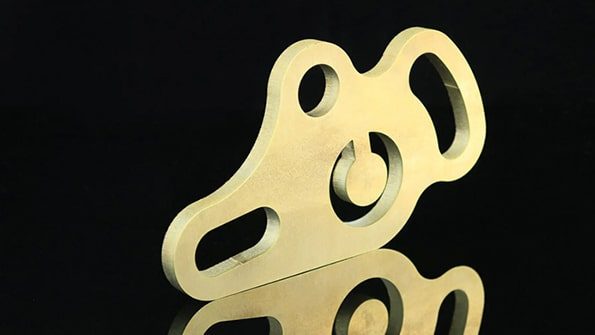
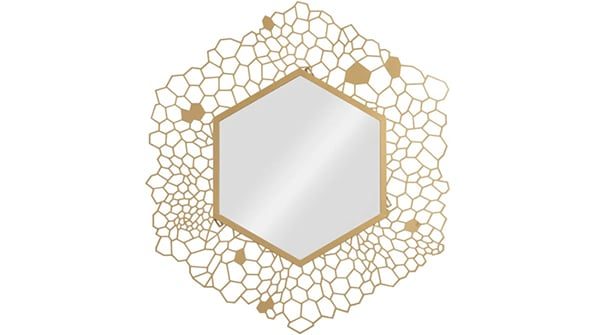
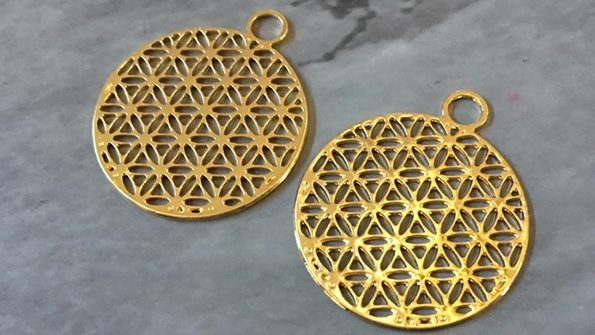
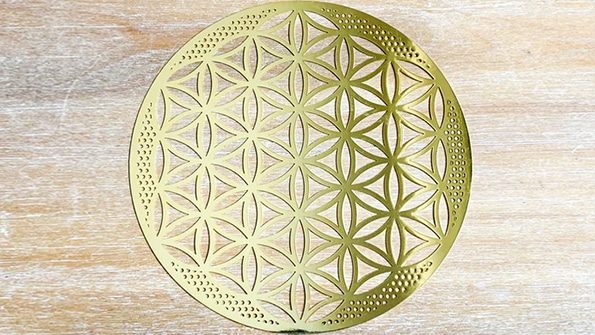
The price of brass laser cutting machines varies significantly depending on several factors, including the machine’s make, model, power, cutting area, and added features. Here’s a breakdown of the general pricing for these machines:
If you want to get an accurate price for a brass laser-cutting machine that fits your specific needs, you can contact us. AccTek Laser’s engineers will provide you with a customized cutting solution based on your needs and provide you with an accurate quote. In addition, when purchasing a laser cutting machine, you should consider not only the initial cost, but also the ongoing expenses, including maintenance, power consumption, and possible future upgrades.
The most commonly used type of laser for cutting brass is fiber lasers. These lasers are highly efficient, producing a focused beam of light that can cut through metals like brass with precision and speed. Here’s why fiber lasers are preferred for cutting brass:
Other lasers like CO2 lasers and Nd: YAG lasers can also cut brass but with some limitations:
In summary, fiber lasers are the most effective and preferred choice for cutting brass due to their high efficiency, precision, faster speeds, and lower maintenance needs.
Brass is more difficult to cut with a laser than steel due to several inherent properties of the material that affect the laser-cutting process:
While steel is easier to cut with a laser due to its lower thermal conductivity, lower reflectivity, and lower oxidation potential, brass presents additional challenges. To effectively cut brass, operators must carefully adjust laser parameters (such as power, focus, and speed), use proper assist gases to reduce oxidation, and sometimes experiment with cutting techniques to achieve clean and precise results.
Yes, higher laser power generally results in faster cutting speeds when cutting brass. Here’s why:
The laser power determines the amount of energy delivered to the brass material. With higher power, more energy is focused on the material, which heats and melts the brass more quickly. This increases the material removal rate, enabling the cutting process to be completed faster.
With more power, the laser can penetrate the material more efficiently. As a result, cutting speeds can be increased because the laser is able to melt and vaporize more material in a shorter time. This leads to higher productivity, especially when cutting thicker materials.
Although higher power leads to faster cutting, it is essential to balance it with other parameters such as laser focus, assist gas flow, and cutting speed. Proper adjustment ensures optimal cut quality and minimizes issues like overheating material deformation, and poor edge finish.
The relationship between laser power and cutting speed is not linear. For each specific brass material and thickness, there is an optimal power range. After reaching this optimal range, increasing the power further may not significantly improve cutting speed and could cause adverse effects like:
While higher laser power can accelerate the cutting speed of brass, it must be used within the optimal range for the material’s thickness and composition. Adjustments in laser focus, cutting speed, and assist gas are also necessary to maintain both cutting speed and quality.
When laser cutting brass, several common problems may arise due to its material properties and the nature of the cutting process. These issues can affect the quality and efficiency of the cut. Here’s a breakdown of the most common problems:
By carefully managing these challenges, brass can be cut efficiently and with high-quality results using laser cutting.
To achieve successful laser cutting of brass, several key elements must be carefully optimized and controlled. These factors ensure the process runs smoothly, resulting in high-quality, precise cuts. Here are the critical elements to consider:
By optimizing these key elements—laser parameters, assist gas selection, material preparation, machine maintenance, and cutting path design—laser cutting of brass can be performed effectively and efficiently. Regular maintenance, careful adjustment of laser settings, and thoughtful design and preparation will contribute to achieving clean, precise cuts with minimal defects.
No, slower cutting speeds do not necessarily make brass cutting easier. While cutting speed is a key factor in the laser cutting process, slower speeds can introduce several challenges, especially when working with materials like brass. Here’s a breakdown of the potential issues and considerations when cutting brass at slower speeds:
In summary, slower cutting speeds do not automatically make brass cutting easier. They can cause several problems, such as overheating, oxidation, and imprecise cuts while reducing efficiency. The key is to find an optimal cutting speed that works in harmony with other parameters, such as laser power, assist gas, and material thickness, to achieve both high-quality and efficient brass cuts. Therefore, it is advisable to perform test cuts and experiments to find the best cutting speed for your specific brass material and application.
When laser cutting brass, the choice of assist gas is crucial to achieving optimal cutting results. The assist gas helps to blow molten metal and debris away from the cutting area, which aids in improving cut quality, reducing oxidation, and enhancing overall cutting efficiency. The two most commonly used assist gases for laser cutting brass are nitrogen and compressed air. Here’s a breakdown of both options:
Nitrogen is a widely used inert gas for laser cutting, especially when working with brass. It offers several advantages for achieving high-quality cuts:
Compressed air is another option for laser cutting brass, though it is typically used less frequently than nitrogen. It is widely available and can be more cost-effective in certain situations. However, there are several important considerations:
Ultimately, the best choice of assist gas will depend on your specific application, material thickness, desired cut quality, and budget. It’s recommended to consult with the manufacturer’s guidelines and perform test cuts to determine the optimal gas for your brass laser cutting needs.
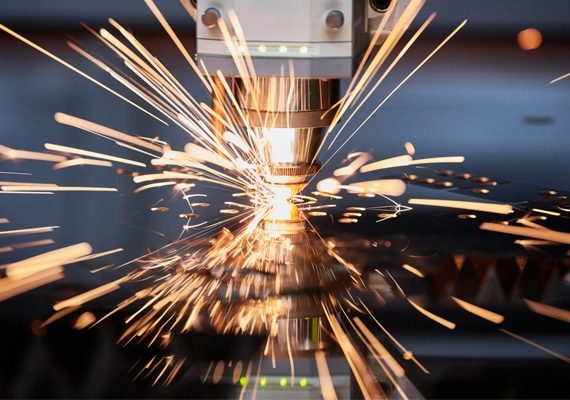
With years of experience in laser cutting technology, we have honed our expertise to provide cutting-edge solutions tailored to your unique needs. Our team of skilled engineers and technicians has the in-depth knowledge to ensure you get the perfect laser-cutting machine for your specific application.
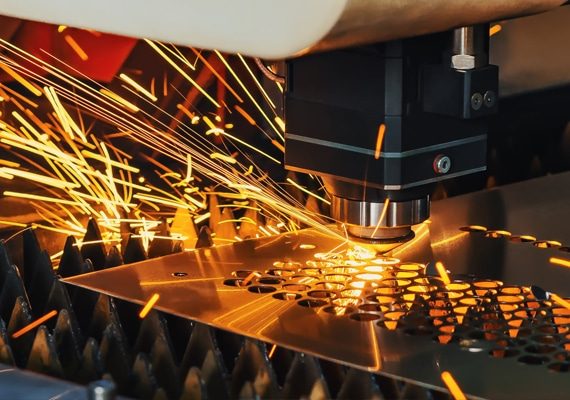
At AccTek Laser, we build strong relationships with our clients. Our dedicated support team provides prompt assistance and after-sales service to keep your laser-cutting machine running at its best for years to come. Your satisfaction is our top priority and we will help you every step of the way.
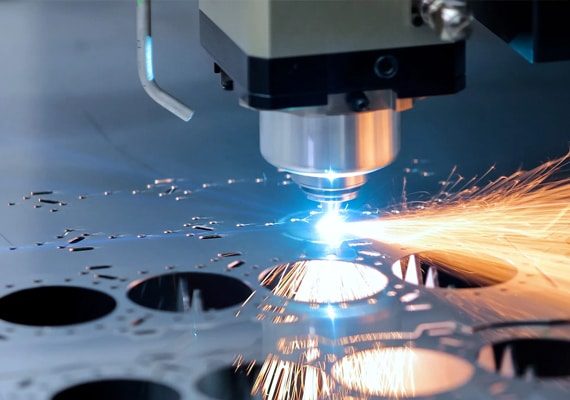
Quality is the cornerstone of our manufacturing process. Every laser-cutting machine is rigorously tested and adheres to strict quality control standards, ensuring that the product you receive meets the highest industry benchmarks. Our dedication to quality ensures you get a machine that performs consistently and delivers perfect cuts every time.
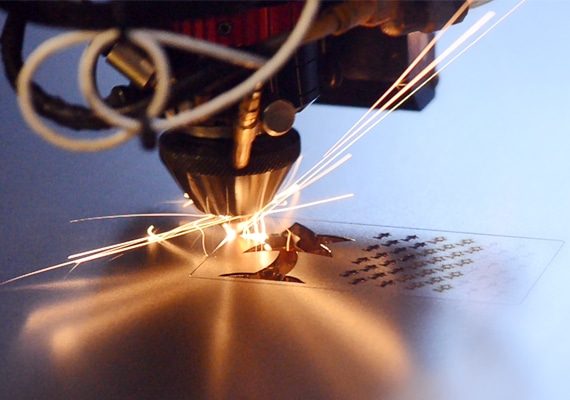
We understand the importance of cost efficiency in today’s competitive landscape. Our laser-cutting machines can provide excellent value for your investment, minimizing downtime and reducing operating costs while maximizing productivity and efficiency.
4 reviews for Brass Laser Cutting Machine
Paul –
Impressed by the machine’s versatility, capable of handling intricate patterns and precise cuts on brass materials.
Anh –
Precision and speed converge in the laser-cutting machine, offering efficient and consistent results for our brass-cutting needs.
Liyana –
We use a laser cutter to achieve precise cuts, optimizing material usage and reducing waste in our workshop.
Lucas –
The laser cutting machine’s precision is exceptional, delivering intricate designs with smooth edges for our brass fabrication projects.